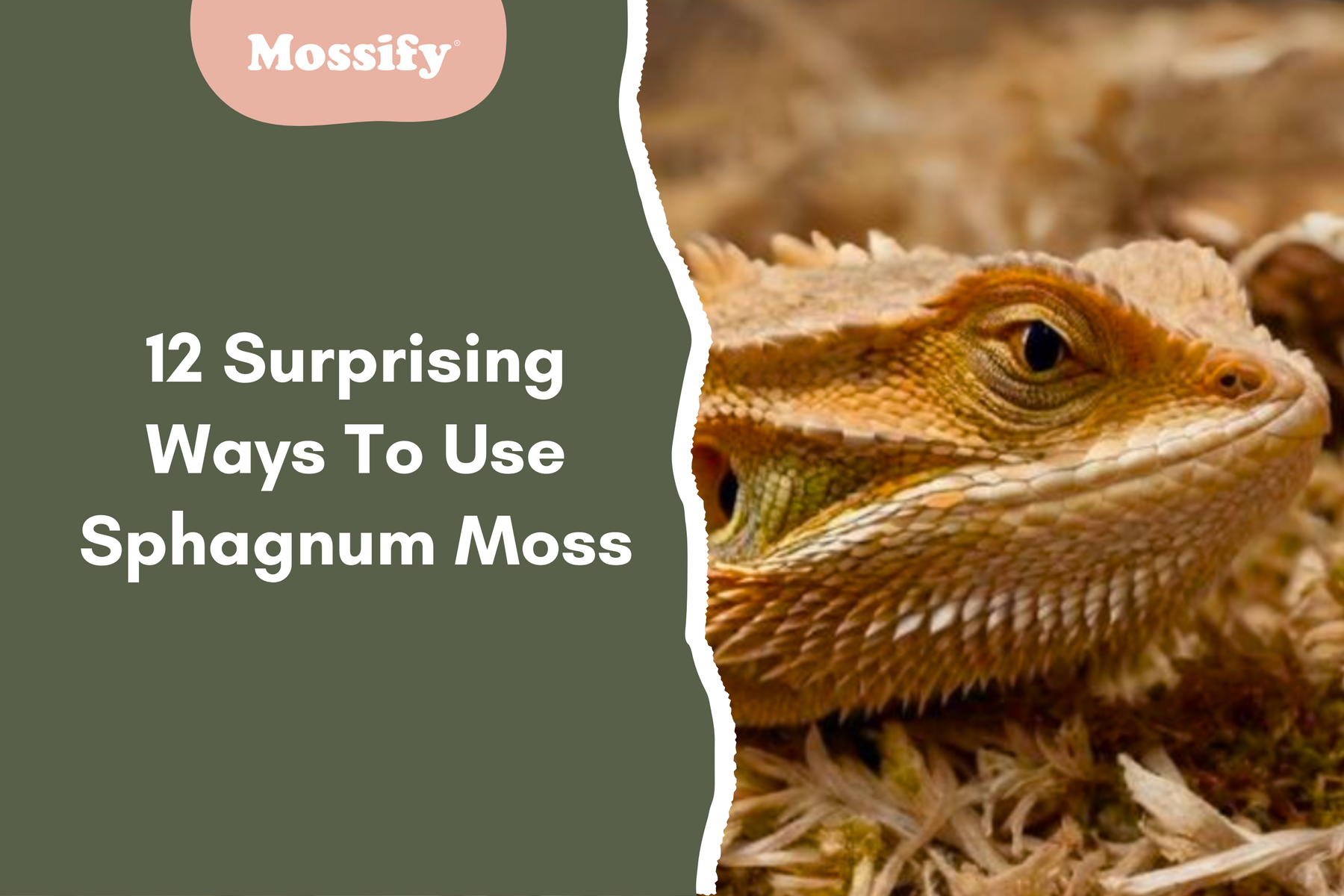With over 300,000 happy plants.
Over 300,000 happy plants

In a world increasingly turning towards sustainable and eco-friendly practices, sphagnum moss emerges as a remarkably versatile ally. Beyond its traditional uses in gardening, this unassuming plant harbours a multitude of applications that may surprise even the most seasoned horticulturists and eco-enthusiasts. This article aims to unveil 12 innovative and surprising ways sphagnum moss can be integrated into various aspects of our lives, shedding light on its multifaceted nature.
Sphagnum moss, often simply referred to as peat moss, is a genus comprising over 380 distinct species. Predominantly found in the Northern Hemisphere, it thrives in damp, nutrient-poor environments, particularly in peat bogs. These bogs are not just moss's natural habitat; they are ecosystems crafted over millennia, with the moss playing a pivotal role in their formation.
Renowned for its extraordinary water retention capabilities, sphagnum moss can hold up to 20 times its dry weight in water, a feature attributable to its unique cellular structure. This characteristic, along with its acidic pH, makes it an invaluable resource in both ecological and practical applications. Additionally, sphagnum moss contributes significantly to carbon sequestration, a process vital for mitigating the effects of climate change.

Orchids, with their exotic allure and reputation for being finicky, thrive when sphagnum moss is used as a potting medium. Its ability to retain moisture while allowing air flow makes it ideal for orchid roots, which require a balance of moisture and oxygen to flourish. Sphagnum moss provides a stable environment, reducing the stress of over or under-watering. This, coupled with its acidic nature, helps mimic the orchids' natural habitat, promoting healthier growth and more vibrant blooms.

Propagation, the process of growing new plants from a variety of sources, can be significantly enhanced with sphagnum moss. Its moisture-retaining properties create an ideal environment for root development. When used in propagating cuttings, sphagnum moss supports the delicate new root systems, providing them with the necessary hydration and aeration for successful growth.

Kokedama, a Japanese art form that translates to 'moss ball,' has gained popularity for its unique aesthetic. Sphagnum moss is the key component in creating these living sculptures. Its pliability and moisture retention are perfect for forming the ball in which the plant's roots are encased, while also sustaining the plant over time with minimal watering.
For climbing plants seeking support akin to their natural environment, DIY moss poles made with sphagnum moss are a game-changer. These poles, easy to create, provide a naturalistic and humid microenvironment, encouraging plants like Monstera and Philodendron to exhibit healthier leaf growth and aerial root development. The sphagnum moss's capacity to retain moisture ensures a consistent water supply, crucial for the epiphytic lifestyle of these plants. This is can be a great alternative to our award-winning Bendable Moss Pole™.

Sphagnum moss's moisture retention is not just beneficial for plants; it's vital in creating humid habitats essential for amphibian egg incubation. The moss's natural antibacterial properties help maintain a clean and stable environment, reducing the risk of fungal or bacterial growth, which can be detrimental to delicate amphibian eggs.

In the realm of reptile care, sphagnum moss proves invaluable in replicating the humid environments that many lizard species call home. When used in terrariums, it helps maintain the necessary humidity levels, crucial for lizards' skin health and overall well-being. Its soft texture and moisture-holding capacity provide a comfortable substrate, enhancing the habitat's overall quality.

For turtle enthusiasts, sphagnum moss serves as an excellent substrate in turtle habitats. Its capacity to hold moisture helps in maintaining the humidity levels needed for many turtle species, especially those accustomed to swampy environments. Additionally, its soft texture provides a comfortable and natural bedding material, contributing to a habitat that supports the health and wellbeing of turtles.
Sphagnum moss is a natural ally in combating soil erosion. When applied to vulnerable soil surfaces, it not only helps in retaining moisture but also aids in binding the soil, thus reducing erosion. Its application in landscaping, especially on slopes or in areas prone to water runoff, can significantly mitigate soil loss, contributing to environmental conservation efforts.
In environments where snails are raised or studied, sphagnum moss proves essential for maintaining the high humidity levels these creatures thrive in. Its ability to retain moisture creates a damp environment conducive to snail health, without the risks of waterlogging or bacterial growth, common challenges in snail habitats.

Sphagnum moss is a boon for seed germination, offering an ideal environment for seeds to sprout. Its fine texture and moisture retention create a stable, nurturing bed for seeds, facilitating faster and more successful germination. The moss’s natural antifungal properties also help protect delicate seedlings from pathogens, making it a superior choice for starting a wide variety of plants.
Sphagnum moss's role extends beyond the soil, contributing significantly to air purification. This humble plant possesses a unique structure capable of trapping airborne particles and absorbing pollutants. When placed indoors, it acts as a natural air purifier, improving air quality by reducing the presence of dust and other particulates. Its use in living spaces, particularly in urban environments where air quality can be compromised, provides a simple, natural way to create a healthier living environment.
The natural beauty of sphagnum moss has made it a favorite in crafting and home decor. Its vibrant green hue and lush texture lend an organic, earthy touch to various projects. From creating lush backdrops in terrariums to forming the base of floral arrangements and wreaths, sphagnum moss adds a touch of nature’s charm. Its pliability and ease of use make it ideal for DIY enthusiasts looking to bring a bit of the outdoors inside, merging aesthetics with the intrinsic benefits of incorporating natural elements into living spaces.
Leave a comment